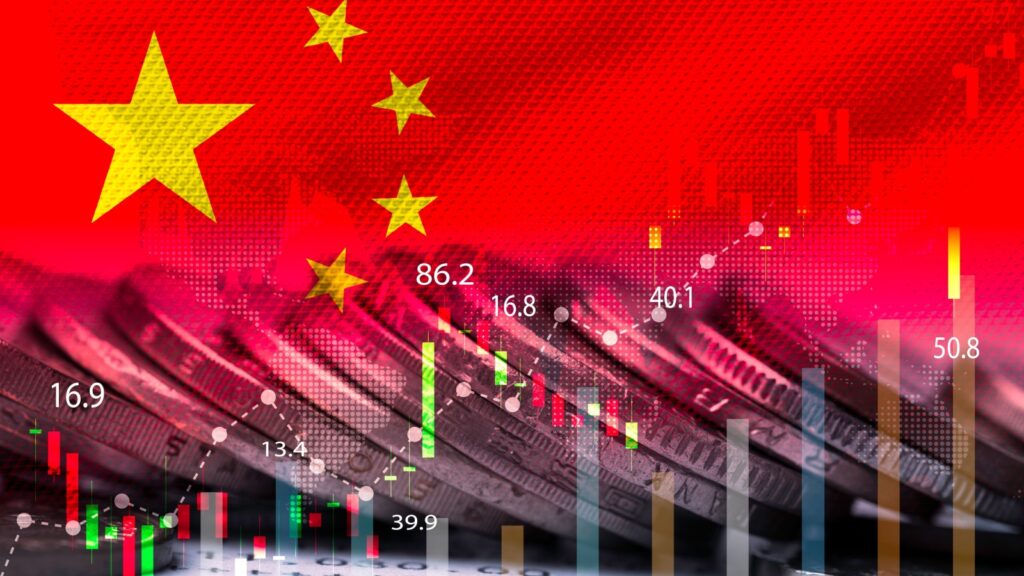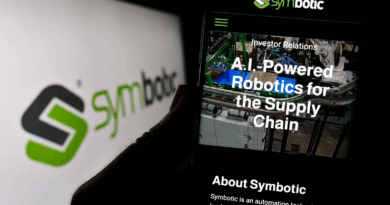We Have a China Deal: Is the Tariff Headwind Done?
Big news on the trade deal front… more deals are coming… forget the July 8 deadline… PCE inflation remains manageable… will we get a July cut?… a 153% return in just a few weeks
VIEW IN BROWSER
After months of speculation, we finally have confirmation…
A U.S./China trade framework is in place.
Announced yesterday by U.S. Commerce Secretary Howard Lutnick, the agreement was originally hashed out during quiet negotiations in Geneva and now appears to be formally signed.
At the heart of the deal is a commitment from China to expedite rare-earth shipments and magnet supplies – critical components for U.S. aerospace, defense, automotive, and semiconductor industries. In return, the U.S. will lift a series of non-tariff countermeasures that had been restricting certain Chinese exports.
Here’s Bloomberg from yesterday:
The China deal, which Lutnick said had been signed two days ago, codifies the terms laid out in trade talks between Beijing and Washington, including a commitment from China to deliver rare earths used in everything from wind turbines to jet planes.
“They’re going to deliver rare earths to us” and once they do that, “we’ll take down our countermeasures,” Lutnick told Bloomberg News in an interview.
This breakthrough is the most important progress to date in President Trump’s sweeping trade push
While not a full-scale trade treaty, the rare-earths deal offers immediate relief for strained U.S. supply chains. Perhaps more importantly, it represents a symbolic win in President Trump’s effort to rebalance America’s trading relationships.
But the good news doesn’t stop there…
The China deal might be the start of a wave of trade announcements in the coming days. According to Lutnick, the White House is working on nine additional trade deals.
Back to Bloomberg:
Lutnick told Bloomberg Television that President Donald Trump was also prepared to finalize a slate of trade deals in the coming two weeks in connection with the president’s July 9 deadline to reinstate higher tariffs he paused in April.
“We’re going to do top 10 deals, put them in the right category, and then these other countries will fit behind,” he said.
Why July 8 is no longer “critical”
President Trump’s initial goal was to secure 90 trade deals in 90 days, with the July 8 “tariff pause expiration” deadline looming.
Earlier this week in the Digest, we predicted that we’d see the trade deadline “can” kicked down the road.
Instead, the Trump administration appears to have simply eased its stance. White House Press Secretary Karoline Leavitt told reporters that the July deadline is “not critical.”
The administration is shifting toward a more flexible model, where deals are finalized as negotiations mature – but with the ongoing threat of tariffs as a motivator.
Leavitt emphasized that Trump could still unilaterally impose targeted tariffs at any time if talks stall, returning to the “Liberation Day” tariff strategy. Of course, the hope is that won’t be necessary.
As to where the rest of the potential trade deals stand, discussions are underway with the EU, Japan, South Korea, Mexico, and India. Zeroing in on India, on Wednesday, Trump hinted that it may be the next country to secure a formal deal.
From Reuters:
President Donald Trump earlier said…that there might be a separate deal coming up that would “open up” India.
Now, there was some unexpected trade deal drama today
As the market was celebrating the China deal, President Trump took to Truth Social to announce a breakdown in progress with Canada.
Here’s The Wall Street Journal:
President Trump said he terminated trade talks with Canada over what he called an egregious digital-services tax on U.S. tech companies, plunging relations with America’s second-largest trading partner back into turmoil.
“Based on this egregious Tax, we are hereby terminating ALL discussions on Trade with Canada, effective immediately,” Trump wrote Friday on Truth Social…
The first payments from tech companies to the Canadian government over the digital-service tax, a levy on revenue companies make from Canadian users, are due on Monday.
The tax would likely cost U.S. tech companies billions of dollars. It includes retroactive taxes on sales going back to 2022, and industry groups estimate the initial payment could total up to $3 billion, with subsequent annual payments north of $1 billion.
Stocks, which had been solidly higher in the morning, sold off. The S&P and Nasdaq even briefly turned negative.
However, as the session went on, buyers stepped back in, and all three indexes closed higher.
Notably, both the S&P and Nasdaq set new record highs today.
So, where do we go next?
The V-shaped rally in the wake of the Liberation Day selloff has been one for the record books.
But for much of June, the S&P 500 has been hovering in a holding pattern, awaiting clarity on rate cuts, inflation, and geopolitical headlines.
With this China agreement signed, and momentum building on other trade fronts (ignoring the set-back with Canada), investors now have something concrete to rally around. It’s fuel for the S&P to take out its prior high, and push into blue-sky territory.
And looking farther out, there’s additional fuel for this rally on the horizon. Let’s rewind to the forecast of our technology expert Luke Lango back in mid-May:
- June delivers a full-blown trade agreement with China and the first Fed rate cut of 2025.
- July brings tax cuts and strong Q2 earnings.
- August caps it off with a re-rating of valuations and likely new all-time highs for the S&P 500.
Though Luke’s prediction of a June rate-cut didn’t materialize (more on that in a moment), he nailed it with the China deal.
Circling back to “fuel for the bull,” we agree with Luke that the passing of tax cuts, and a strong Q2 earnings season, will juice this rally.
While the Fed didn’t cut rates in June, the odds of a July cut have been edging higher
The big issue for the Fed and its interest rate policy has been inflation.
Well, this morning brought the latest data the Fed will factor into its interest rate policy – the Personal Consumption Expenditures (PCE) price index.
Headline PCE climbed 0.1% for the month, putting the annual inflation rate at 2.3%. This matched the forecast from Dow Jones economists.
Core PCE, which strips out volatile food and energy prices, came in slightly hotter than forecasts. The monthly figure climbed 0.2% compared to the 0.1% expectation. And the yearly climb of 2.7% was just above the 2.6% forecast. However, this didn’t spook Wall Street, which – as noted earlier – set new records today.
It didn’t spook us either – we’re pleased with these numbers. They don’t show tariffs having had a major impact on prices.
Yes, there’s a lag. And yes, core PCE was slightly hotter than expected. But that increase was too mild to set off any alarm bells.
Looking ahead, Luke believes the recent cool data has given the Fed the ammunition to begin cutting.
Here he is from this week’s Daily Notes in Innovation Investor:
The inflation dragon remains subdued.
And if the data sticks (as it looks likely to), then a July rate cut from the Fed isn’t just a possibility — it’s starting to feel very likely to us.
As we’ve covered recently, Fed officials have already softened their tone. Powell said this week that the Fed is remaining “flexible.” Waller said rate cuts could begin “as early as July.” Bowman said she’d support cuts if inflation stayed cool — and guess what? It has.
With macro headwinds fading and inflation trends stabilizing, all eyes are now on the Fed’s July 30th meeting.
Our call: it will be the first of multiple cuts that help push the market even higher through the year-end.
Luke concludes his analysis by writing, “The bull market is real. The opportunity is now. Let’s keep riding the wave.”
And the good news keeps coming…
In our 6/2/25 Digest, we flagged a sleeper threat in Trump’s “One Big Beautiful Bill Act.”
Section 899, a key provision, overhauls how foreign investors are taxed on U.S. assets – removing exemptions, adding burdensome reporting, and slapping on taxes of up to 20%. In short, it makes the U.S. a less attractive place for foreign capital. That’s bad news for stocks, as fewer foreign inflows mean lower prices.
Worse, it would’ve taxed foreign central banks, undercutting their incentive to keep buying or holding U.S. Treasuries – potentially sending yields higher and putting pressure on the dollar.
Here was our takeaway:
Bottom line: Section 899 is a big deal. While it might pressure other nations toward better trade behavior, it also risks unraveling decades of dependable foreign investment in the U.S. that could, ultimately, hit our portfolios.
Well, someone saw the light and Section 899 is now scrapped.
From The Wall Street Journal yesterday:
The U.S. and other countries reached an agreement to exempt U.S.-based companies from some corporate taxes that were part of a 2021 international minimum-tax agreement, Treasury Secretary Scott Bessent said Thursday.
The agreement among the Group of Seven largest economies means that the “revenge tax” being contemplated in Republicans’ tax-and-spending bill should be removed from the legislation, Bessent said…
The potential tax, which would have become Section 899 of the tax code, had roiled markets and frustrated foreign-owned companies, who had argued that it would depress investment in the U.S.
Bottom line: Lots of good news is hitting the headlines. While there’s sure to be some profit taking in the coming days, overall, keep riding this bull.
Before we sign off…
The feedback we’re receiving about Keith Kaplan’s live demonstration on Wednesday of the new “TradeSmithGPT” trading tool has been overwhelmingly positive.
But it’s well-deserved – this AI-based trading tool is perhaps the most advanced product available for retail investors in the market today.
Here’s Keith with the background behind it:
As CEO of TradeSmith, I have a team of top data scientists, programmers, and quant investors. We pride ourselves as being on the cutting edge. But I wanted to go one step further.
So, I asked: Can we harness the same type of artificial intelligence technology Wall Street uses – and make it available to everyday investors?
After tens of millions of dollars and hundreds of thousands of man-hours, the answer is a resounding “Yes!”
What they created is a robust screening tool that works 24 hours a day, seven days a week, 365 days a year – analyzing opportunities across nearly 2,000 stocks in any sector you can imagine.
In the back-tests, it produced triple-digit returns in just weeks – sometimes only a few days.
Back to Keith:
The results are stunning.
In back-tests, this tool identified time windows where stocks surged so fast, it was like compressing four, eight — even nine — years of market gains into just a few weeks.
Here’s an example Keith provided in his demonstration on Wednesday…
On October 3, 2024, TradeSmithGPT identified a 19-day profit window opening for the popular music streaming platform stock, Spotify.
It also identified the type of trade that would be best to execute during this window.
As you can see below, that created a trade opportunity for a gain of 153% in just a few weeks.
To be clear, SPOT’s stock didn’t jump 153% during this period. But with the way TradeSmithGPT recommended traders play it, a triple-digit return in less than three weeks was on the table.
Candidly, this tool and its capabilities need to be seen. Words don’t adequately capture how robust it is and what it can do for investors.
So, to see it in action for yourself, totally free, here’s your live replay of Keith on Wednesday.
Have a good evening,
Jeff Remsburg
The post We Have a China Deal: Is the Tariff Headwind Done? appeared first on InvestorPlace.






